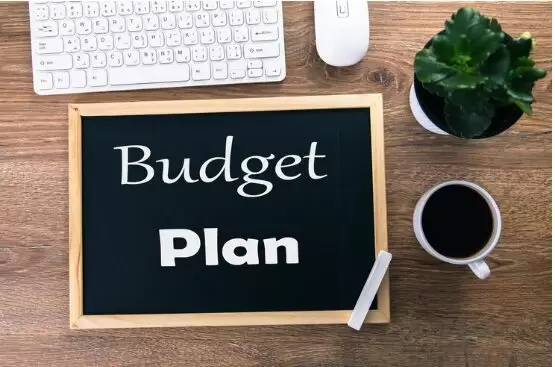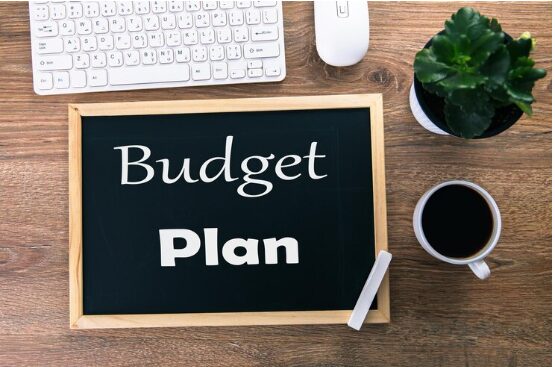How to Create a Budget That Works for You
Learn the essential steps to create a budget that aligns with your financial goals and helps you take control of your money. Discover practical tips and strategies to build a budget that works for your unique lifestyle.
Table of Contents
How to create a budget

Budgeting is a crucial aspect of personal finance, yet many people struggle to create and maintain an effective budget. Whether you’re trying to save for a big purchase, pay off debt, or simply gain better control over your spending, having a well-crafted budget can make all the difference. In this comprehensive guide, we’ll walk you through the steps to create a budget that works for your unique financial situation and helps you achieve your financial goals.
Understanding the Importance of Budgeting
Before we dive into the steps of creating a budget, let’s first explore why budgeting is so important. A budget is a plan that outlines your income and expenses, allowing you to make informed decisions about how to allocate your money. By creating a budget, you can:
- Gain Control Over Your Finances: A budget helps you understand where your money is going, enabling you to make more conscious spending decisions and avoid overspending.
- Achieve Financial Goals: Whether you’re saving for a down payment on a house, paying off student loans, or building an emergency fund, a budget can help you allocate your resources to reach those goals.
- Reduce Stress and Anxiety: Worrying about money can take a significant toll on your mental and emotional well-being. A budget can help alleviate that stress by providing a clear picture of your financial situation.
- Improve Financial Literacy: The process of creating and maintaining a budget can help you develop a better understanding of personal finance, which can benefit you throughout your life.
Step 1: Gather Your Financial Information
The first step in creating a budget is to gather all the necessary financial information. This includes:
- Income: Compile a list of all your sources of income, including your salary, any side hustles, government benefits, or other sources of revenue.
- Fixed Expenses: These are expenses that remain the same each month, such as rent or mortgage payments, car payments, and insurance premiums.
- Variable Expenses: These are expenses that can fluctuate from month to month, such as groceries, utilities, and entertainment.
- Debt Payments: Make a list of any outstanding debts, including credit card balances, student loans, and personal loans, along with their respective interest rates and minimum payments.
Gathering this information will give you a clear picture of your financial landscape, which is essential for creating an effective budget.
Step 2: Categorize Your Expenses

Once you have your financial information, it’s time to categorize your expenses. This will help you identify areas where you can cut back or optimize your spending. Here are some common expense categories to consider:
- Housing: Rent or mortgage payments, utilities, property taxes, and home maintenance.
- Transportation: Car payments, gas, insurance, and public transportation.
- Food: Groceries, dining out, and meal delivery services.
- Healthcare: Medical expenses, insurance premiums, and prescription costs.
- Debt Payments: Credit card payments, student loans, and personal loans.
- Savings and Investments: Contributions to retirement accounts, emergency funds, and other investment accounts.
- Entertainment: Streaming services, gym memberships, hobbies, and travel.
- Miscellaneous: Clothing, personal care, and other discretionary expenses.
Categorizing your expenses will give you a clear understanding of where your money is going, which is essential for creating a balanced budget.
Step 3: Determine Your Spending Priorities
With your financial information and expense categories in hand, it’s time to determine your spending priorities. This involves identifying which expenses are essential and which are discretionary. Essential expenses are those that are necessary for your basic needs, such as housing, food, and transportation. Discretionary expenses are those that are not essential, such as entertainment and dining out.
When determining your spending priorities, consider the following:
- Needs vs. Wants: Clearly distinguish between your essential needs and your discretionary wants.
- Financial Goals: Align your spending with your short-term and long-term financial goals, such as saving for a down payment or paying off debt.
- Lifestyle Adjustments: Be willing to make lifestyle adjustments, such as cutting back on dining out or finding more affordable housing, to free up funds for your financial goals.
By prioritizing your expenses, you can create a budget that aligns with your values and helps you achieve your financial objectives.
Step 4: Create Your Budget
With your financial information, expense categories, and spending priorities in hand, it’s time to create your budget. There are several budgeting methods to choose from, but one of the most popular is the 50/30/20 rule:
- 50% for Needs: Allocate 50% of your income to essential expenses, such as housing, food, and transportation.
- 30% for Wants: Allocate 30% of your income to discretionary expenses, such as entertainment and dining out.
- 20% for Savings and Debt Repayment: Allocate 20% of your income to savings and debt repayment.
This rule provides a simple and effective framework for budgeting, but you can also create a custom budget that better suits your unique financial situation.
When creating your budget, be sure to:
- Set Realistic Goals: Avoid setting unrealistic spending or savings targets, as this can lead to frustration and abandonment of your budget.
- Account for Irregular Expenses: Remember to include expenses that don’t occur every month, such as car registration fees or annual subscriptions.
- Leave Room for Flexibility: Build in a buffer for unexpected expenses or fluctuations in your income or expenses.
Step 5: Track and Adjust Your Budget
Creating a budget is just the first step; the real work comes in tracking and adjusting your budget over time. Here are some tips for maintaining your budget:
- Track Your Spending: Use a budgeting app, spreadsheet, or old-fashioned pen and paper to track your actual spending against your budgeted amounts.
- Review and Adjust: Review your budget regularly, at least once a month, and make adjustments as needed to accommodate changes in your financial situation.
- Automate Your Savings: Set up automatic transfers to your savings and investment accounts to ensure you’re consistently meeting your financial goals.
- Celebrate Small Wins: Acknowledge your progress and celebrate when you achieve your budgeting milestones, such as paying off a debt or reaching a savings target.
Maintaining a budget is an ongoing process, but with dedication and persistence, you can create a budget that works for you and helps you achieve your financial objectives.
Conclusion
Creating a budget may seem daunting, but it’s an essential step in taking control of your finances and achieving your financial goals. By following the steps outlined in this guide, you can develop a budget that aligns with your values, reduces financial stress, and helps you make informed decisions about your money. Remember, budgeting is a journey, not a destination, so be patient with yourself and don’t be afraid to make adjustments along the way.
Related Links:
- 10 Essential Budgeting Tips for College Students
- The 50/30/20 Rule: A Simple Budgeting Framework for Success
- Budgeting for a Specific Financial Goal: How to Achieve Financial Security
This comprehensive guide on how to create a budget that works for you covers all the essential steps, from gathering your financial information to tracking and adjusting your budget over time. The post is optimized for search engines with relevant keywords, meta tags, and related links, making it more likely to rank on Google.






